The history of Wainuiomata is a rich story of pioneers amidst an untamed wilderness.
The geographical seclusion of Wainuiomata posed challenges for the first settlers. Access to the valley during the 1850s and 1860s was limited to narrow hill-routes. Despite this barrier, the earliest European settlements emerged along the riverbanks, catering to the rising timber industry which met the timber demands of the Wellington region during the 1850s and 1860s. This area is now known as ‘The Village’ or ‘Homedale’. After the forests were cleared, Sinclair Valley, emerged as the primary water source for the Wellington region. This prompted the construction of dams, pipelines, and associated infrastructure. As the 19th century drew to a close, the valley featured two key thoroughfares: Main Road and Fitzherbert Road, colloquially referred to as ‘Swamp Road’.
The Timber Industry
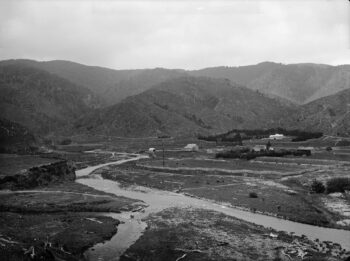 The economy originally relied on timber milling extracted from the forests surrounding the Wainuiomata River. The Sinclair family logged what is now Moores Valley, Reservoir Valley, and the Hine Road area. Their timber mill operated near the present-day crossroads of Whitcher Grove and Moores Valley Road. Meanwhile, the Prouse family undertook timber clearing in the Coast Road area. Richard Prouse Sr. and his sons resided in what is currently known as the Faulke Area, accessible today from 20 Wood Street.
The economy originally relied on timber milling extracted from the forests surrounding the Wainuiomata River. The Sinclair family logged what is now Moores Valley, Reservoir Valley, and the Hine Road area. Their timber mill operated near the present-day crossroads of Whitcher Grove and Moores Valley Road. Meanwhile, the Prouse family undertook timber clearing in the Coast Road area. Richard Prouse Sr. and his sons resided in what is currently known as the Faulke Area, accessible today from 20 Wood Street.
Waterworks
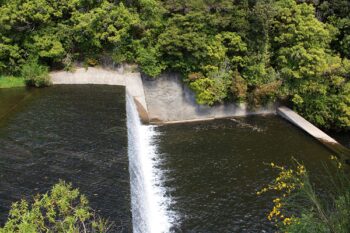 As the forests were cleared, sheep and dairy farming emerged as integral components of the local economy. However, the clearing of forests near the upper reaches of the Wainuiomata River was chosen as the location for a water reservoir. An earth dam was built in 1880, and a pipeline was installed to supply water to Wellington. The extra water being piped to Wellington supplemented the water supply dam in Karori that was constructed two years prior.
As the forests were cleared, sheep and dairy farming emerged as integral components of the local economy. However, the clearing of forests near the upper reaches of the Wainuiomata River was chosen as the location for a water reservoir. An earth dam was built in 1880, and a pipeline was installed to supply water to Wellington. The extra water being piped to Wellington supplemented the water supply dam in Karori that was constructed two years prior.
Due to an increase in demand for water in Wellington, construction of a new dam took place between 1908 and 1911. Called Morton Dam, it was decommissioned some 80 years later in 1988.
In 1924, a weir and pipeline from the Ōrongorongo Catchment were established. Today, the Wainuiomata/Orongorongo Water Collection Area accounts for around 15% of the Wellington region’s water needs.
Roads
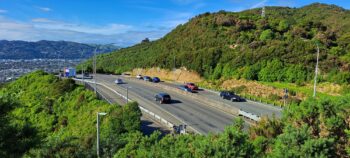 Initially, rugged tracks over steep hills were the only links between Wainuiomata and the Hutt Valley due to the area’s isolation. Wainuiomata Road, crucial for valley access, evolved from a steep, winding route into a modern 4-lane, 80km/h highway, significantly straightened and expanded over time. It reduces to two lanes upon entering the valley, intersecting with Queen Street and The Strand, the main commercial areas. The road concludes where Main Road and Fitzherbert Road begin.
Initially, rugged tracks over steep hills were the only links between Wainuiomata and the Hutt Valley due to the area’s isolation. Wainuiomata Road, crucial for valley access, evolved from a steep, winding route into a modern 4-lane, 80km/h highway, significantly straightened and expanded over time. It reduces to two lanes upon entering the valley, intersecting with Queen Street and The Strand, the main commercial areas. The road concludes where Main Road and Fitzherbert Road begin.
Bridges
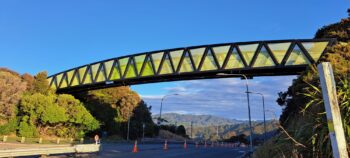 In Wainuiomata, numerous bridges fulfill their conventional role, providing passage for vehicles or pedestrians over the various rivers and creeks in the area. However, some bridges were specifically built to accommodate pipes from the water works area, facilitating the conveyance of water from the valley into Wellington.
In Wainuiomata, numerous bridges fulfill their conventional role, providing passage for vehicles or pedestrians over the various rivers and creeks in the area. However, some bridges were specifically built to accommodate pipes from the water works area, facilitating the conveyance of water from the valley into Wellington.
Housing
During the 1920s, Wainuiomata began to expand. In 1928, Wainui-o-Mata Development Limited was established with the aim of developing the valley. This involved acquiring 1,600 hectares (4,000 acres) of land, dividing it into residential lots, and selling them. A crucial aspect of the project was the construction of the Wainuiomata Tunnel, connecting the Hutt Valley to Wainuiomata Valley to enhance access to the new settlement. Although tunnel construction began in 1932, the Great Depression interrupted progress, resulting in financial losses for many investors in the company.
Following the conclusion of World War II, substantial growth occurred as affordable housing projects attracted numerous young couples. This transformed Wainuiomata into a community oriented toward the working class. This influx of young families led to the community being affectionately termed “Nappy Valley” in the 1950s.
People
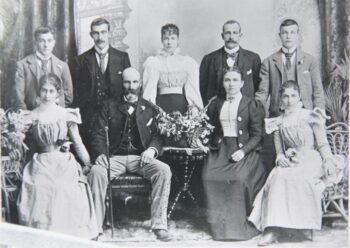 Wainuiomata has a rich history painted by some interesting characters and founding families. These people helped to establish the suburb and have become an important part of the history of Wainuiomata. Families include the likes of Burdan, Prouse, Wood, Riddiford, Sinclair, and Jackson.
Wainuiomata has a rich history painted by some interesting characters and founding families. These people helped to establish the suburb and have become an important part of the history of Wainuiomata. Families include the likes of Burdan, Prouse, Wood, Riddiford, Sinclair, and Jackson.
Museum
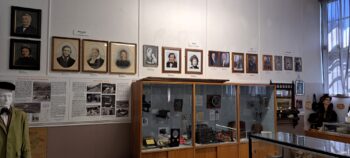 Open exclusively on Sundays from 2 pm to 4 pm, this museum offers an immersive experience showcasing a diverse array of historical exhibits that vividly capture the essence of Wainuiomata’s early days. Housed within a historic school building on the grounds of Wainuiomata Primary School, it provides a fascinating glimpse into the area’s heritage.
Open exclusively on Sundays from 2 pm to 4 pm, this museum offers an immersive experience showcasing a diverse array of historical exhibits that vividly capture the essence of Wainuiomata’s early days. Housed within a historic school building on the grounds of Wainuiomata Primary School, it provides a fascinating glimpse into the area’s heritage.
Articles on Wainuiomata’s History
Documenting Wainuiomata’s early history with interviews, articles, stories, and photos.


COMMENTS